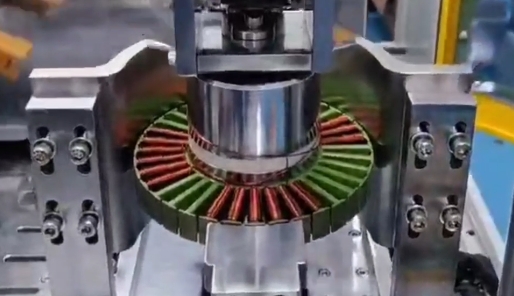Many customers in the purchase of brushless winding machine, may encounter such a situation: whether it is a second-hand equipment, or choose a less professional manufacturer products, are prone to all kinds of faults in production; even if the new machine, if the debugging is not in place or improperly operated, the same may cause problems. So, when the brushless motor winding machine failure, how to troubleshoot and repair?
1. Man-made operation and maintenance problems
Inadequate operator proficiency or maintenance is a common cause of failure. For example, the wire barrel is not placed stably, the mold is not clamped, the operating program is selected by mistake, or the working range is not checked for the presence of foreign objects before starting the machine.
Solution: Before starting the machine, we must check several times to make sure that the wire drum, mold and other components are firmly installed, the program is correctly selected, and there is no debris in the working area; at the same time, we should strengthen the training of operators and standardize the daily maintenance procedures.
2. Abnormal operation of the whole machine
If there is an error in the machine, try to reset or restart the power supply, and check whether the power supply voltage is stable. Before operation, you need to do a good job of data backup, through the initialization to clear the temporary fault; if the fault is still not cleared, you need to further check the hardware, if necessary, parts replacement.
3. Programming and parameter setting problems
Unreasonable setting of winding parameters may cause the system to report errors or functional failure.
Solution: Conduct a trial run of the program compiled, observe the running status, and correct the parameter errors in time (such as winding speed, number of turns, row spacing, etc.) to ensure that the program logic matches the production requirements.

4. Broken wire and wire failure
This kind of problem is mostly related to tension control, running speed or equipment components:
Check whether the tensioner is within the corresponding range, if necessary, adjust the tension parameters;
If the speed is too fast, try to reduce the running speed;
In case of thread breakage, it is necessary to check whether the wire is stuck, or whether the mold is worn or misaligned, etc., so that the stuck wire can be cleaned up and the mold repaired in time.
5. Hidden failure of parts
For small parts failure is not obvious, you can quickly locate the problem by replacing spare parts (such as replacing sensors, line mechanism and other wear parts), to identify the specific faulty parts, targeted repair or replacement.
Mastering the above troubleshooting and maintenance methods can effectively reduce the downtime of the brushless motor winding machine. Daily use, whether it is new or used equipment, we need to focus on standardized operation, regular maintenance and professional debugging, from the source to reduce the incidence of failure.









